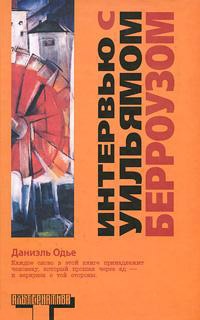Читать книгу "Из жизни двух городов. Париж и Лондон - Джонатан Конлин"
Шрифт:
Интервал:
Закладка:
Philippe Chauveau and André Sallé, Music-hall et café-concert (Paris: Bordas, 1985).
Rupert Christiansen, The Visitors: Culture Shock in Nineteenth-Century Britain (London: Chatto and Windus, 2000).
Jonathan Conlin, ‘Vauxhall on the boulevard: pleasure gardens in Paris and London, 1759–89’, Urban History, 35: 1 (May 2008).
Barry J. Faulk, Music Hall and Modernity: The Late-Victorian Discovery of Popular Culture (Athens: Ohio University Press, 2004).
Jacques Fescotte, Histoire du Music-Hall (Paris: PUF, 1965).
J. E. Crawford Flitch, Modern Dancing and Dancers (London: Grant Richards, 1912).
François Gasnault, Guinguettes et Lorettes: bals publics et dans social à Paris entre 1830 et 1870 (Paris: Aubier, 1986).
Dagmar Kif, The Victorian Music Hall: Culture, Class and Conflict, trans. Roy Kift (Cambridge: Cambridge University Press, 1996).
Gilles-Antoine Langlois, Folies, Tivolis et Attractions: les premiers parc de loisirs parisiens (Paris: Action Artistique de la Ville de Paris, 1991).
Raoul Muriand, Les Folies Bergères (Sèvres: La Sirène, 1994).
Claire Parftt, ‘Capturing the cancan: body politics from the Enlightenment to postmodernity’, PhD diss., University of Surrey, 2008.
David Price, Cancan! (London: Cygnus Arts, 1998).
Derek B. Scott, Sounds of the Metropolis: Te Nineteenth-Century Popular Music Revolution in London, New York, Paris and Vienna (Oxford: Oxford University Press, 2008).
Jerrold Seigel, Bohemian Paris: Culture, Politics, and the Boundaries of Bourgeois Life, 1830–1930 (Baltimore: Johns Hopkins University Press, 1986).
Nicole Wild, Dictionnaire des théatres Parisiens au XIX siècles (Paris: Amateurs de Livres, 1989).
Глава 5. Темная сторона
История освоения ночного города в восемнадцатом и девятнадцатом веках до сих пор не рассказана никем, ученые по какой-то причине игнорировали эту тему (кроме Шифельбуша). Козловски и Кабанту предложили полезные модели. Битти и Эмсли являются наиболее авторитетными исследователями истории британской преступности и правопорядка; в некоторых работах последнего приводятся сравнения между Лондоном и Парижем. Биографии Видока содержат в основном лишь комментарии к его мемуарам: последние доступны в английском переводе (Edinburgh, AK Press). Исследований истории появления и развития детективного жанра так много, что мы перечислили здесь лишь самые известные и надежные источники.
John Beattie, Policing and Punishment in London, 1660–1750: Urban Crime and the Limits of Terror (Oxford: Oxford University Press, 2001).
T. J. Binyon, Murder Will Out: Te Detective in Fiction (Oxford: Oxford University Press, 1989).
Roger Bonniot, Émile Gaboriau ou la Naissance du Roman policier (Paris: J. Vrin, 1985).
Alain Cabantous, Histoire de la nuit: XVIIe — XVIIIe siècle (Paris: Fayard, 2009).
Simone Delattre, Les douze heures noires: la nuit à Paris au XIXe siècle (Paris: Albin Michel, 2000).
Clive Emsley and Haia Shpayer-Makov, Police Detectives in History, 1750–1950 (Aldershot: Ashgate, 2006).
Judith Flanders, The Invention of Murder (London: Harper, 2011).
Ghoul, Fayçal El, La Police Parisienne dans la second moitie du XVIIIe siècle (1760–1785) 2 vols (Tunis: Université de Tunis i, 1995).
Craig Koslofsky, Evening’s Empire: A History of the Night in Early Modern Europe (Cambridge: Cambridge University Press, 2011).
Richard Maxwell, Te Mysteries of Paris and London (Charlottesville: University of Virginia, 1992).
Régis Messac, Le ‘Detective Novel’ et l’influence de la pensée scientifque (Paris: Bibliothèque de la Révue de littérature comparé, 1929).
Michael Saler, ‘«Clap if you believe in Sherlock Holmes»: mass culture and the re-enchantment of modernity, c. 1890–c. 1940’, Historical Journal, 46: 3 (September 2003), 599–622.
Wolfgang Schivelbusch, Disenchanted Night: Te Industrialization of Light in the Nineteenth Century (Berkeley: University of California Press, 1988).
R. F. Stewart…. And Always a Detective (London: David & Charles, 1980).
Глава 6. Мир мертвых
Выдающийся исследователь кладбищ Джеймс Стивенс Керл уже давно «пашет» свою одинокую борозду. Его книга «Викторианское празднование смерти» охватывает период восемнадцатого века и появление великих кладбищ Лондона. Научных работ о парижских кладбищах практически нет. Существующие книги и брошюры, как правило, сосредоточены на одном кладбище и больше заинтересованы в биографиях знаменитостей, чем в сборе документов о финансировании, проектировании и использовании кладбищ. Многое еще предстоит изучить в плане отношения кладбищ к городу в целом.
Philippe Ariès, Western Attitudes towards Death, from the Middle Ages to the Present (Baltimore: Johns Hopkins University Press, 1972).
Frédéric Bertrand, ‘Cimetières, jardins et colonies’, in Simon Texier (ed.), Les Parcs et Jardins dans l’urbanisme Parisien: XIXe — XXe siècles (Paris: Action Artistique de la Ville de Paris, 2001), pp. 125–30.
James Stevens Curl, Death and Architecture (Stroud: Sutton, 2002).
James Stevens Curl, Te Victorian Celebration of Death (Stroud: Sutton, 2005).
James Stevens Curl (ed.), Kensal Green Cemetery: The Origins and Development of the General Cemetery of All Souls, Kensal Green, London, 1824–2001 (Chichester: Phillimore, 2001).
Richard A. Etlin, Te Architecture of Death: Te Transformation of the Cemetery in Eighteenth-Century Paris (Cambridge, Mass: MIT, 1984).
Peter C. Jupp and Glennys Howarth (eds), The Changing Face of Death: Historical Accounts of Death and Disposal (Basingstoke: Macmillan, 1997).
Samantha Matthews, ‘The London necropolis’, in Lawrence Phillips (ed.), A Mighty Mass of Brick and Smoke: Victorian and Edwardian Representations of London (Amsterdam: Rodopi, 2008), pp. 257–82.
Ruth Richardson, Death, Dissection and the Destitute (London: RKP, 1987).
Внимание!
Сайт сохраняет куки вашего браузера. Вы сможете в любой момент сделать закладку и продолжить прочтение книги «Из жизни двух городов. Париж и Лондон - Джонатан Конлин», после закрытия браузера.




